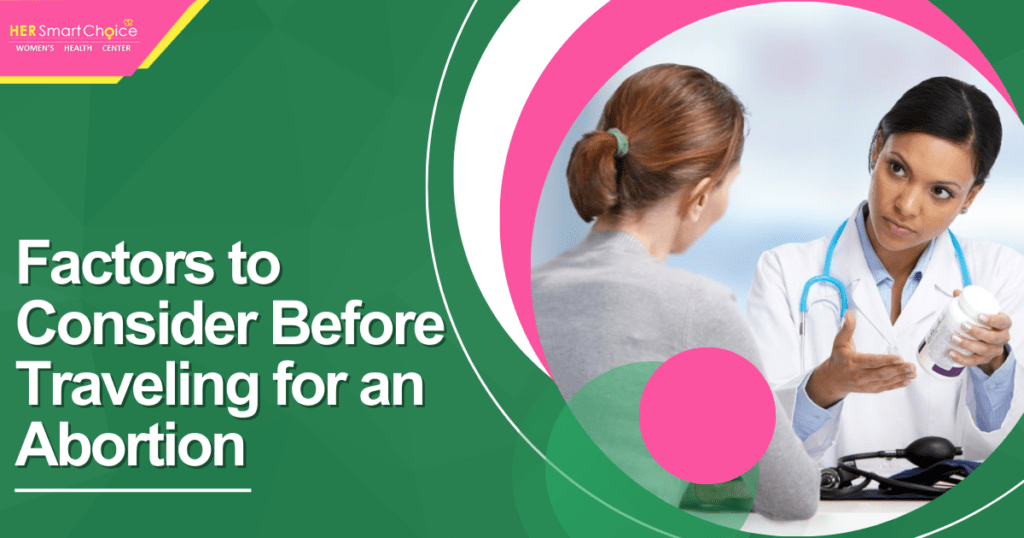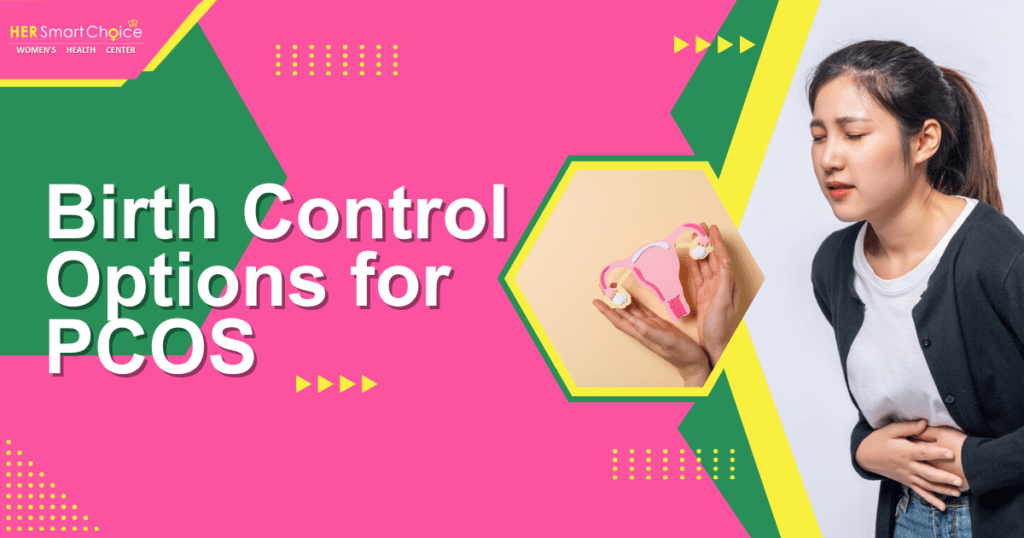Weekly Birth Control Patches: Your Guide to Effective Family Planning
Discover the convenience of birth control patches, a weekly contraceptive solution that delivers hormones through your skin, offering high effectiveness with minimal daily effort. This comprehensive guide will walk you through how these patches work to prevent pregnancy, how they stack up against other methods, potential side effects and long-term advantages, brand comparisons, proper application techniques, cost and accessibility, real user experiences, and what to expect after you stop using them. Whether you’re wondering if birth control patches can stop your period or searching for the best patch for your needs, we’ve got you covered for informed family planning.
Follow Us!
How Do Birth Control Patches Work to Prevent Pregnancy?
A birth control patch is a transdermal system that releases estrogen and progestin hormones into your bloodstream. This steady release inhibits ovulation, thickens cervical mucus to block sperm, and thins the uterine lining to prevent pregnancy. By wearing one patch for seven days, you maintain consistent hormone levels, similar to a daily pill but without the daily reminder, making adherence much simpler.
What Hormones Are in Birth Control Patches and How Do They Function?
Combined hormonal patches contain ethinyl estradiol (an estrogen) and a progestin, either norelgestromin or levonorgestrel. These hormones work together to prevent pregnancy by interfering with key reproductive processes. The estrogen in the patch helps keep your cycle more regular and balanced, while the progestin’s primary role is to prevent the release of an egg each month.
- Ethinyl estradiol helps regulate your cycle and manage hormonal fluctuations.
- Norelgestromin or levonorgestrel prevents your ovaries from releasing an egg.
- Together, these hormones mimic your body’s natural cycle to provide contraceptive protection.
Understanding this hormonal action is key to grasping how the patch effectively prevents pregnancy.
How Do Birth Control Patches Suppress Ovulation and Affect Cervical Mucus?
The steady supply of progestin from the patch inhibits the surge of luteinizing hormone (LH) that triggers ovulation. Estrogen boosts this effect, creating a strong barrier against egg release. At the same time, the progestin thickens your cervical mucus, making it harder for sperm to travel through the cervix and reach an egg.
- Consistent progestin levels → Prevents LH surge → No ovulation
- Estrogen supports ovulation suppression → Enhanced contraceptive effect
- Thickened cervical mucus → Blocks sperm from reaching the egg
This dual action ensures that both egg release and sperm movement are hindered, effectively preventing fertilization.
How Does the Patch Thin the Uterine Lining to Prevent Pregnancy?
The progestin in the patch also affects your uterine lining, making it thinner and less receptive to a fertilized egg. It does this by reducing the growth of the uterine lining and its blood supply. The moderated presence of estrogen helps maintain a stable, thin lining, further reducing the chance of implantation.
| Uterine Lining Change | Hormonal Influence | Result for Pregnancy Prevention |
|---|---|---|
| Reduced lining thickness | Progestin’s effect | Less receptive to implantation |
| Decreased blood supply | Progestin’s action | Limits nutrient availability for implantation |
| Stable lining | Estrogen’s role | Maintains a thin, consistent uterine environment |
This thinning of the uterine lining adds another layer of protection, complementing the other mechanisms that prevent pregnancy.
Where Should You Apply the Birth Control Patch for Best Results?
To ensure consistent hormone absorption, apply the patch to a clean, dry skin area on your buttock, abdomen, upper back (between your shoulder blades), or outer upper arm. Rotating these sites each week helps prevent skin irritation and maintains predictable hormone delivery.
- Your buttock offers a larger surface area for good adhesion.
- The lower abdomen is easy to reach for self-application.
- The upper back is a discreet location, hidden under clothing.
- The outer upper arm is accessible and generally holds the patch securely.
Regularly switching application spots helps keep your skin healthy and ensures the patch works effectively.
How Effective Are Birth Control Patches Compared to Other Contraceptive Methods?

Birth control patches are highly effective, with over 99% effectiveness when used perfectly and about 91-93% effectiveness with typical use. This places them among the most reliable non-invasive birth control methods available. Their weekly application schedule and transdermal hormone delivery offer similar effectiveness to oral contraceptives but with an easier adherence schedule.
Hatcher, R. A., et al., Contraceptive Technology (2011)
This foundational research highlights the strong performance of birth control patches when compared to other contraceptive options.
What Is the Difference Between Perfect Use and Typical Use Effectiveness?
“Perfect use” refers to using the patch exactly as directed, without any errors, like applying it on time every week. This ideal usage results in a failure rate of about 1% per year. “Typical use” accounts for real-world scenarios, such as forgetting to change the patch on time or it detaching, leading to a failure rate of around 7-9% per year.
How Does Weight and Missed Patches Affect Patch Effectiveness?
For individuals with a body mass index (BMI) over 30 kg/m², the patch may be somewhat less effective due to potentially lower hormone levels. Missing a patch change can result in decreased hormone levels, thereby increasing the risk of pregnancy. If you realize you’ve missed a patch within 24 hours, apply a new one immediately and continue your regular schedule. If it has been more than 24 hours, apply a new patch and use a backup method, such as condoms, for the next seven days.
How Do Birth Control Patches Compare to Pills, IUDs, and Implants?
| Contraceptive Method | Perfect Use Effectiveness | Typical Use Effectiveness | Key Benefit |
|---|---|---|---|
| Birth Control Patch | 99% | 91–93% | Weekly application |
| Birth Control Pills | 99% | 91% | Familiar daily routine |
| Hormonal IUD | Over 99% | Over 99% | Long-lasting, minimal effort |
| Contraceptive Implant | Over 99% | Over 99% | Protection for 3+ years |
When choosing a method, the patch offers a convenient weekly option that fits between daily pills and long-term, implantable devices, allowing you to select based on your lifestyle.
What Are the Common Side Effects and Risks of Using Birth Control Patches?
Most people tolerate birth control patches well, but some common side effects can include headaches, nausea, breast tenderness, mood changes, and mild skin irritation where the patch is applied. More serious, though rare, risks—especially for smokers over 35 or those who are overweight—include an increased chance of blood clots, stroke, and heart attack.
What Are the Most Frequent Side Effects Like Headaches, Nausea, and Skin Irritation?
- Headaches or migraines may occur as your body adjusts to the hormones.
- Nausea is common initially but usually subsides within the first month or two.
- Skin reactions can include redness, itching, or small bumps under the patch.
These milder side effects often lessen over time, but it’s important to be aware of more serious potential risks.
What Serious Risks Should Users Be Aware of, Including Blood Clots?
The estrogen and progestin in combined hormonal contraceptives can slightly increase the risk of blood clots, such as deep vein thrombosis (DVT) and pulmonary embolism (PE), as well as stroke. Factors like smoking, being over 35, having high blood pressure, or obesity can further elevate these risks. It’s crucial to discuss your health history with a healthcare provider before starting the patch.
Curtis, K. M., et al., Centers for Disease Control and Prevention (2016)
This important citation from the CDC provides critical information regarding the potential health risks associated with using birth control patches, which is vital for informed decision-making.
Who Should Avoid Birth Control Patches?
Certain individuals should not use combined hormonal patches, including those with a history of blood clots, certain types of cancer (like breast cancer), uncontrolled high blood pressure, migraines with aura, or those who smoke and are over 35. A thorough medical assessment will help determine if the patch is a safe option for you or if other methods, like progestin-only options or non-hormonal methods, would be more suitable.
How Can You Recognize Warning Signs and When to See a Healthcare Provider?
It’s important to seek immediate medical attention if you experience sudden chest pain, shortness of breath, severe headaches, changes in vision, swelling in your legs, or severe abdominal pain. These could be signs of a serious health issue, and prompt medical evaluation is essential for your safety and to discuss alternative birth control options.
Being aware of these warning signs is crucial for your health and safety, and it naturally leads to discussing the other benefits the patch may offer.
What Are the Benefits of Birth Control Patches Beyond Pregnancy Prevention?
Beyond preventing pregnancy, birth control patches can help regulate your menstrual cycle, ease PMS symptoms, improve acne, reduce menstrual cramps, and may lower the risk of endometrial and ovarian cancers with long-term use.
American College of Obstetricians and Gynecologists (2018)
This research from the ACOG supports the article’s points about the additional health benefits that birth control patches can provide, extending beyond their primary contraceptive function.
Can Birth Control Patches Help Regulate Periods and Reduce PMS Symptoms?
By delivering hormones consistently each week, the patch can lead to lighter, more predictable periods and fewer PMS symptoms like mood swings or breast tenderness. The stable hormone levels help minimize bloating and irritability often associated with the premenstrual phase.
How Do Patches Improve Acne and Reduce Menstrual Cramps?
The progestin in the patch can help reduce acne by decreasing oil production in your skin. It also helps thin the uterine lining, which can lead to less prostaglandin production during your period, resulting in milder cramps and less pain.
Do Birth Control Patches Reduce the Risk of Certain Cancers?
Studies suggest that using combined hormonal contraceptives, like the patch, for extended periods can reduce the risk of endometrial and ovarian cancers by up to 50%. This protective effect is thought to be due to the suppression of ovulation and the regulation of the uterine lining, and it can even last for several years after you stop using the method.
These added benefits make the patch an attractive option, and now let’s look at the different brands available.
What Are the Different Brands and Types of Birth Control Patches Available?

The main birth control patch brands include Xulane, Twirla, and Zafemy. They differ in the types and amounts of hormones they contain, as well as their size and how well they stick to the skin. Knowing these differences can help you and your doctor choose the best patch for your specific needs, considering hormone sensitivity, weight, and skin type.
How Do Xulane, Twirla, and Zafemy Differ in Hormone Composition and Dosage?
| Brand Name | Estrogen (Ethinyl Estradiol) | Progestin Type | Patch Size | Key Distinction |
|---|---|---|---|---|
| Xulane | 35 µg | Norelgestromin 150 µg | 20 cm² | Higher estrogen dose |
| Twirla | 30 µg | Levonorgestrel 120 µg | 18 cm² | Lower estrogen, smaller patch |
| Zafemy | 20 µg | Segesterone acetate 150 µg | 14 cm² | Low estrogen, new progestin |
These variations can influence how you experience side effects and how well the hormones are absorbed, helping you find the right fit.
What Are the Availability and Prescription Requirements for Each Brand?
All birth control patches require a prescription from a healthcare provider. You can typically get them at a pharmacy or through mail-order services. Your insurance plan may cover them, but availability can vary by insurance formulary and region, so it’s best to check with your doctor and insurance provider.
What Are the Unique Side Effect Profiles of Popular Patch Brands?
- Xulane users sometimes report more breast tenderness and nausea, possibly due to its higher estrogen content.
- Twirla, with its lower estrogen dose, may lead to less breakthrough bleeding but might be less effective for individuals weighing over 198 lbs.
- Zafemy uses a newer progestin and low estrogen, with early studies suggesting good cycle control and fewer estrogen-related side effects.
Understanding these brand-specific effects can help you make a more informed choice, and now let’s cover how to use them correctly.
How Should You Use Birth Control Patches Correctly for Maximum Effectiveness?
Using your birth control patch correctly and sticking to the schedule is key to maintaining steady hormone levels and ensuring reliable pregnancy prevention. Knowing the weekly routine and what to do if your patch comes off or you miss a change is essential.
What Is the Weekly Application Schedule for Birth Control Patches?
- Week 1: Apply your first patch on any clean, dry skin area. Wear it for seven days.
- Weeks 2 & 3: Remove the old patch and apply a new one on the same day of the week, choosing a different application site.
- Week 4: Remove the patch. You’ll have a patch-free week, during which you’ll likely have a withdrawal bleed.
What Should You Do If a Patch Falls Off or a Dose Is Missed?
If your patch detaches and it’s been less than 24 hours, try to reapply the same patch or put on a new one immediately. Continue with your regular patch change day. If the patch has been off for 24 hours or more, or if you miss a scheduled change, apply a new patch and use a backup birth control method, like condoms, for the next seven days.
Can You Skip Your Period Using the Birth Control Patch?
Yes, you can skip your period by applying a new patch at the start of Week 4 instead of taking your patch-free week. This keeps your hormone levels consistent and prevents the withdrawal bleed. Always discuss this option with your healthcare provider first.
Mastering these usage guidelines ensures the patch works effectively, and next, we’ll look at the costs involved.
How Much Do Birth Control Patches Cost and How Accessible Are They?
The cost of birth control patches can vary depending on the brand, your insurance coverage, and where you get them. If you don’t have insurance, you might find more affordable options at community health clinics or through manufacturer discount programs. Understanding these options can help make patches more accessible.
What Is the Typical Cost of Birth Control Patches With and Without Insurance?
- With insurance: Your out-of-pocket cost, or copay, typically ranges from $0 to $50 per month, depending on your plan.
- Without insurance: The retail price can be around $150 to $200 per month.
Many manufacturers offer savings cards or coupons that can significantly lower the cost for those without insurance.
Where Can You Get Birth Control Patches If You Are Uninsured?
If you’re uninsured, family planning clinics, Planned Parenthood centers, and Title X-funded health centers often provide services on a sliding scale based on your income. Some online telehealth services also offer discounted prescriptions and delivery of birth control patches.
What Are the Prescription Requirements and How to Obtain a Patch?
To get a birth control patch, you’ll need a prescription from a healthcare provider, such as a doctor, nurse practitioner, or physician assistant. This usually involves a medical evaluation, including a review of your health history, a blood pressure check, and possibly a weight measurement. Telehealth appointments have made it easier to get prescriptions, which can then be sent directly to your pharmacy.
Knowing how to navigate cost and access empowers you to start using the patch, and user reviews offer valuable real-world insights.
What Do Users Say About Birth Control Patches? Reviews and Experiences
Many people who use birth control patches appreciate the convenience of a weekly routine and report better cycle control and fewer mood swings compared to birth control pills. However, some users experience mild skin irritation or occasional spotting between periods.
What Are Common User Satisfaction Levels and Concerns?
- High satisfaction: Users often praise the ease of use, discreet application, and predictable cycle management.
- Common concerns: Skin sensitivity at the application site, occasional breakthrough bleeding, and sometimes forgetting the weekly change day.
High satisfaction rates are often linked to clear instructions on proper application and site rotation.
How Do Users Compare Birth Control Patches to Other Contraceptive Methods?
Compared to birth control pills, patches offer a less frequent application schedule but similar potential side effects. When compared to IUDs or implants, patches provide a user-controlled hormonal method without invasive insertion, though they require weekly attention rather than long-term protection.
Understanding user experiences helps us consider what happens when you decide to stop using the patch.
How Does Discontinuing Birth Control Patches Affect Fertility and Hormonal Balance?
When you stop using a combined hormonal birth control patch, your natural menstrual cycles and fertility typically return within one to three months. However, the exact timing can vary depending on your individual body and your previous cycle regularity.
How Soon Does Fertility Return After Stopping the Patch?
Most individuals will start ovulating again by their next menstrual cycle after stopping the patch. Fertility generally returns within 4 to 8 weeks as your body’s natural hormone production resumes.
What Hormonal Changes and Symptoms Can Occur Post-Discontinuation?
After you stop using the patch, your estrogen and progestin levels will drop. This can sometimes lead to temporary irregular spotting, mild mood shifts, or cramping as your body readjusts to its natural cycle. These changes usually resolve within a couple of cycles.
Ready to Make an Informed Choice?
Choosing the right birth control is a personal journey. Birth control patches offer a convenient and effective option for many. If you’re considering this method, remember to discuss your health history and any concerns with your healthcare provider. They can help you weigh the benefits and risks to find the best fit for your needs.
Talk to your doctor today about whether a weekly birth control patch is right for you!
Frequently Asked Questions About Birth Control Patches
Birth control patches are highly effective with over 99% success rate when used perfectly and 91-93% effectiveness with typical use. This makes them one of the most reliable non-invasive contraceptive methods available. The weekly application schedule helps maintain consistent hormone levels, reducing the risk of user error compared to daily pills.
Birth control patches contain ethinyl estradiol (estrogen) and a progestin like norelgestromin or levonorgestrel. These hormones work together to prevent ovulation by suppressing the luteinizing hormone (LH) surge, thickening cervical mucus to block sperm, and thinning the uterine lining. The steady hormone release through your skin provides consistent contraceptive protection for seven days per patch.
Apply the patch to clean, dry skin on your buttock, abdomen, upper back (between shoulder blades), or outer upper arm. Rotate application sites weekly to prevent skin irritation and ensure consistent hormone absorption. Choose areas that won’t be rubbed by tight clothing and avoid applying to broken or irritated skin for optimal effectiveness.
While not specifically designed to stop periods, birth control patches can lighten menstrual flow and reduce period-related symptoms due to the hormonal regulation they provide. The thinning of the uterine lining caused by progestin often results in lighter, more predictable periods. However, complete period suppression typically requires continuous patch use under medical supervision.
Birth control patches offer significant convenience advantages over daily pills since they only require weekly application versus daily pill-taking. This reduces the risk of missed doses and maintains more consistent hormone levels throughout the week. The patch provides similar effectiveness to combination birth control pills but with better adherence rates due to the reduced frequency of user intervention required.
Follow Us!

























